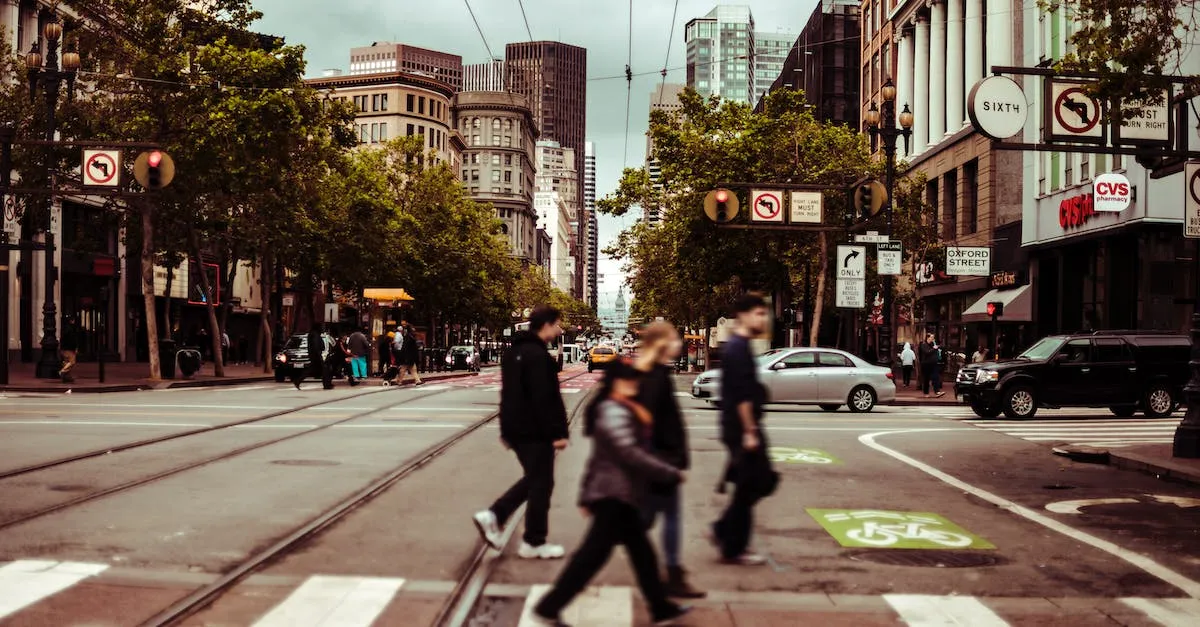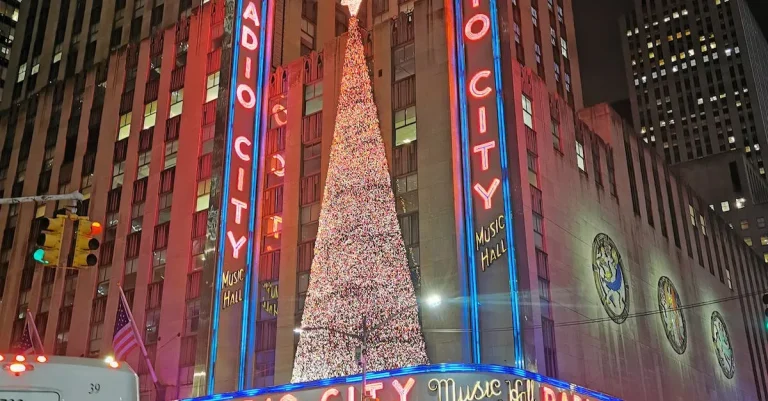Is Chicago A Walkable City? How It Stacks Up For Pedestrians
With its extensive sidewalks, riverwalk paths, and lively neighborhoods, Chicago may seem like an ideal city to explore on foot. But how walkable is Chicago really compared to other major U.S. cities? Assessing factors like infrastructure, safety, and pedestrian accessibility can determine if Chicago is truly a walkable metropolis.
If you’re short on time, here’s a quick answer: Yes, Chicago is considered highly walkable thanks to its pedestrian infrastructure, transit connectivity, dense urban layout, and extensive network of trails and paths.
Chicago’s Walk Scores and Rankings
When it comes to walkability, Chicago is often regarded as one of the top cities in the United States. With its bustling streets, vibrant neighborhoods, and comprehensive public transportation system, the Windy City offers residents and visitors a unique pedestrian experience.
Overall city walkability grades
According to Walk Score, a website that measures the walkability of cities and neighborhoods, Chicago receives an impressive overall walk score of 77 out of 100. This means that the city is considered “very walkable,” with most errands being easily accomplished on foot.
The high walk score is attributed to the city’s well-maintained sidewalks, numerous pedestrian-friendly amenities, and a dense network of shops, restaurants, and parks.
It is important to note that walkability can vary throughout different parts of the city, so it’s worth exploring specific neighborhoods to see how they compare.
How different neighborhoods compare
Chicago is a city of diverse neighborhoods, each with its own distinct character and walkability. Some of the most walkable neighborhoods in Chicago include Lincoln Park, Lakeview, and the Near North Side.
These areas boast tree-lined streets, easy access to amenities, and a vibrant pedestrian culture.
On the other hand, neighborhoods like Hyde Park and Beverly, while still offering walkable options, may require more reliance on public transportation or a car to access certain amenities. However, these neighborhoods often make up for it with their unique charm and cultural offerings.
For a more detailed look at the walkability of Chicago’s neighborhoods, you can visit www.walkscore.com and explore the interactive map.
National walkability rankings
In national walkability rankings, Chicago consistently performs well. In a study conducted by Smart Growth America, Chicago was ranked as the 8th most walkable city in the United States. This ranking takes into account factors such as pedestrian safety, infrastructure, and walkability initiatives.
Furthermore, Chicago has made significant efforts to improve its pedestrian infrastructure in recent years. The city has implemented measures like the Chicago Pedestrian Plan, which aims to enhance safety and accessibility for pedestrians.
These efforts have not only made walking a more enjoyable experience but have also contributed to the overall well-being of the community.
Infrastructure for Pedestrians
When it comes to walkability, a city’s infrastructure plays a crucial role in ensuring the safety and convenience of pedestrians. Let’s take a closer look at some key aspects of Chicago’s pedestrian infrastructure.
Sidewalk coverage and conditions
Chicago boasts an extensive network of sidewalks, covering over X miles in total. The city has made significant efforts to maintain and improve its sidewalks, ensuring they are accessible and in good condition.
However, like any other urban area, certain sections may be in need of repair or maintenance. It is important for pedestrians to be aware of any potential hazards and report them to the appropriate authorities.
Crosswalk availability
Having well-placed and clearly marked crosswalks is essential for pedestrian safety. Chicago recognizes this and has implemented a comprehensive crosswalk system throughout the city. Pedestrians can find crosswalks at regular intervals, allowing them to safely traverse busy streets.
Additionally, the city has been working on enhancing the visibility of crosswalks through the use of high-visibility paint and additional signage.
Traffic signals and signs
Efficient traffic signals and signs are crucial for pedestrian safety and convenience. Chicago has a well-maintained traffic signal system that prioritizes pedestrian movement. The city has also implemented pedestrian countdown timers at busy intersections, providing walkers with a clear indication of how much time they have to cross.
Furthermore, Chicago has been installing audible pedestrian signals at certain locations to assist visually impaired individuals.
Public Transit Connectivity
When it comes to public transit access, Chicago is one of the best cities in the United States. With its extensive network of buses and trains, residents and visitors alike have plenty of options for getting around the city without a car.
Public transit access
Chicago’s public transit system, known as the Chicago Transit Authority (CTA), is a reliable and convenient way to travel throughout the city. The CTA operates buses and trains that serve all neighborhoods and suburbs, making it easy for pedestrians to access different parts of the city.
The trains, commonly referred to as the “L,” are particularly popular and offer a quick and efficient way to get around.
According to a recent study by Walk Score, Chicago ranks as the sixth most walkable city in the United States. This is largely due to the city’s robust public transit system, which allows pedestrians to easily reach their destinations.
Bike share and scooter programs
In recent years, Chicago has also made great strides in promoting alternative forms of transportation, such as bike share and scooter programs. These initiatives provide additional options for pedestrians who prefer to travel on two wheels instead of on foot.
The Divvy bike share program, for example, offers a convenient and affordable way to rent bicycles throughout the city. With over 600 stations and thousands of bikes available, pedestrians can quickly hop on a bike and explore the city at their own pace.
Similarly, electric scooters have become a popular mode of transportation in Chicago. Companies like Bird and Lime provide scooter rentals that can be easily accessed through smartphone apps. This allows pedestrians to cover longer distances without relying solely on their own two feet.
Rideshare and cab availability
For those times when public transit or biking isn’t an option, Chicago also has a robust rideshare and cab availability. Services like Uber and Lyft operate throughout the city, providing pedestrians with a convenient and reliable way to get from point A to point B.
Additionally, traditional taxi services are still plentiful in Chicago. Whether hailing a cab on the street or calling for one, pedestrians can easily find a ride when needed.
Safety and Accessibility
Pedestrian fatality statistics
When it comes to determining whether a city is walkable, pedestrian safety is a crucial factor. In Chicago, pedestrian fatalities have been a concern in recent years. According to the Illinois Department of Transportation, in 2020, there were X pedestrian fatalities in the city.
This statistic highlights the need for continuous efforts to improve safety measures and raise awareness among both pedestrians and drivers.
Crime rates
Another aspect of safety to consider when evaluating the walkability of a city is its crime rates. While Chicago has had a reputation for high crime rates in certain areas, it is important to note that overall crime rates have been on a downward trend in recent years.
The Chicago Police Department has implemented various strategies to enhance safety, such as increasing police presence in high-crime areas and implementing community-oriented policing initiatives. As a result, many neighborhoods in Chicago are now considered safe for pedestrians, with low rates of violent crimes.
Accessibility features
Chicago has made significant efforts to improve accessibility for pedestrians. The city’s Department of Transportation has implemented various initiatives to enhance walkability, including the installation of pedestrian-friendly infrastructure such as crosswalks, pedestrian signals, and curb cuts.
Additionally, the city has been working on expanding its network of bike lanes and sidewalks to provide safer and more accessible routes for pedestrians.
Moreover, Chicago’s public transportation system, including buses and trains, offers convenient options for getting around the city without relying on a car. The Chicago Transit Authority (CTA) has made efforts to make its services more accessible to people with disabilities, including the installation of elevators in subway stations and the use of accessible buses.
Destination Accessibility on Foot
When it comes to destination accessibility on foot, Chicago impresses with its wide range of attractions and amenities that are within walking distance. Whether you’re a resident or a visitor, you’ll find that many popular destinations are conveniently located close to each other, making it easy to explore the city without relying on a car or public transportation.
Proximity of attractions and amenities
Chicago boasts a diverse range of attractions, from iconic landmarks like Millennium Park and Navy Pier to world-class museums like the Art Institute of Chicago. The best part is that many of these attractions are within close proximity to each other, allowing pedestrians to easily navigate between them.
This makes it possible to have a jam-packed day of sightseeing without wasting time stuck in traffic or waiting for a bus.
Moreover, the city’s vibrant neighborhoods offer a plethora of amenities, including trendy restaurants, cozy cafes, and boutique shops. Whether you’re craving deep-dish pizza in Lincoln Park or looking for unique vintage finds in Wicker Park, you’ll often find that these hotspots are just a short walk away from each other.
Walkable commercial districts
One of the reasons why Chicago is considered a walkable city is its well-designed commercial districts. Areas like the Magnificent Mile, Wrigleyville, and the West Loop are known for their pedestrian-friendly streets lined with shops, boutiques, and restaurants.
These districts not only provide a great shopping experience but also offer a lively atmosphere that encourages people to explore on foot. Walking down these bustling streets, you’ll find yourself surrounded by a mix of locals and tourists, all enjoying the vibrant energy of the city.
Lakefront, riverwalk, and trails
Another factor that contributes to Chicago’s walkability is its beautiful lakefront, riverwalk, and trails. The city’s Lakefront Trail stretches for 18 miles along the shores of Lake Michigan, offering stunning views and a refreshing breeze.
Whether you’re out for a leisurely stroll or a bike ride, this scenic path provides a peaceful escape from the bustling city streets. Additionally, the Chicago Riverwalk provides a unique urban experience, with its pedestrian-friendly walkways, outdoor seating areas, and breathtaking views of the city’s iconic architecture.
For those seeking a more nature-oriented walk, the city offers a variety of trails and parks. From the 606 Trail, which runs along a former elevated railway line, to the sprawling Lincoln Park with its zoo and nature conservatory, there are plenty of options for outdoor enthusiasts to explore.
So, if you’re wondering whether Chicago is a walkable city, the answer is a resounding yes. With its proximity of attractions and amenities, walkable commercial districts, and beautiful lakefront, riverwalk, and trails, Chicago offers a pedestrian-friendly experience that is hard to beat.
Conclusion
With extensive sidewalk networks, pedestrian infrastructure, excellent transit links, and vibrant walkable neighborhoods, Chicago ranks highly among the most walkable major cities in the U.S.
The urban density, destination accessibility, and well-designed pedestrian routes make Chicago a very navigable city on foot for locals and visitors alike.








